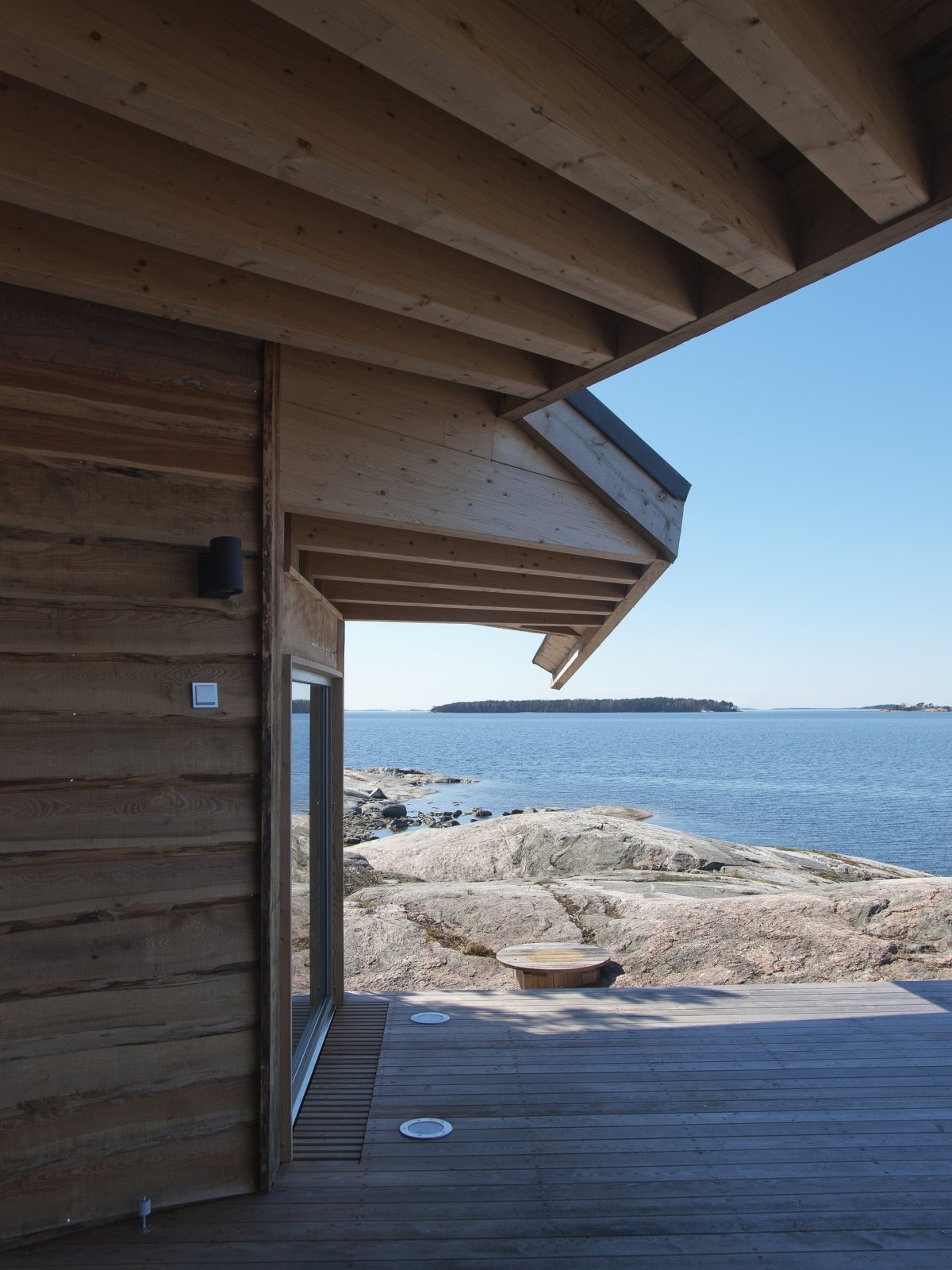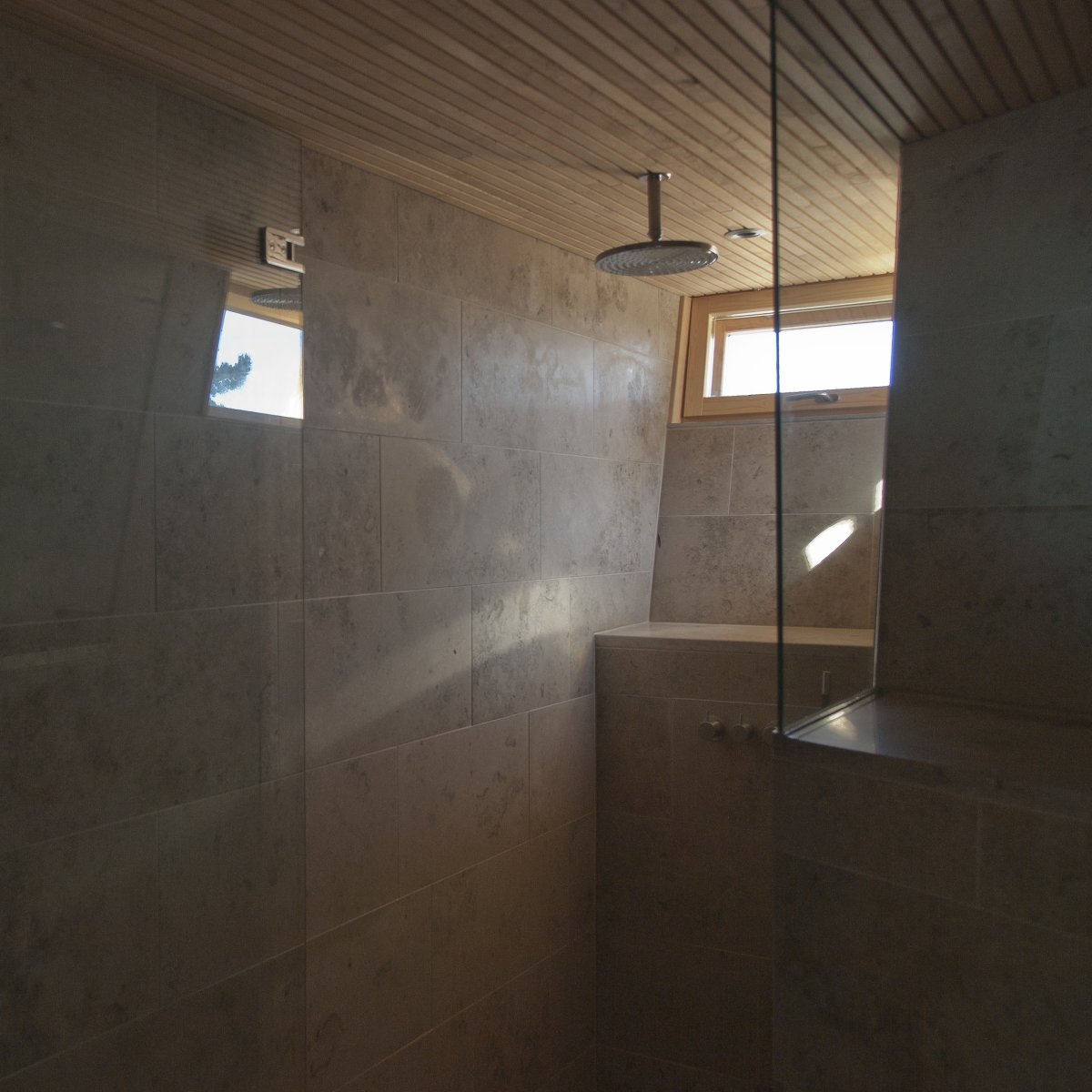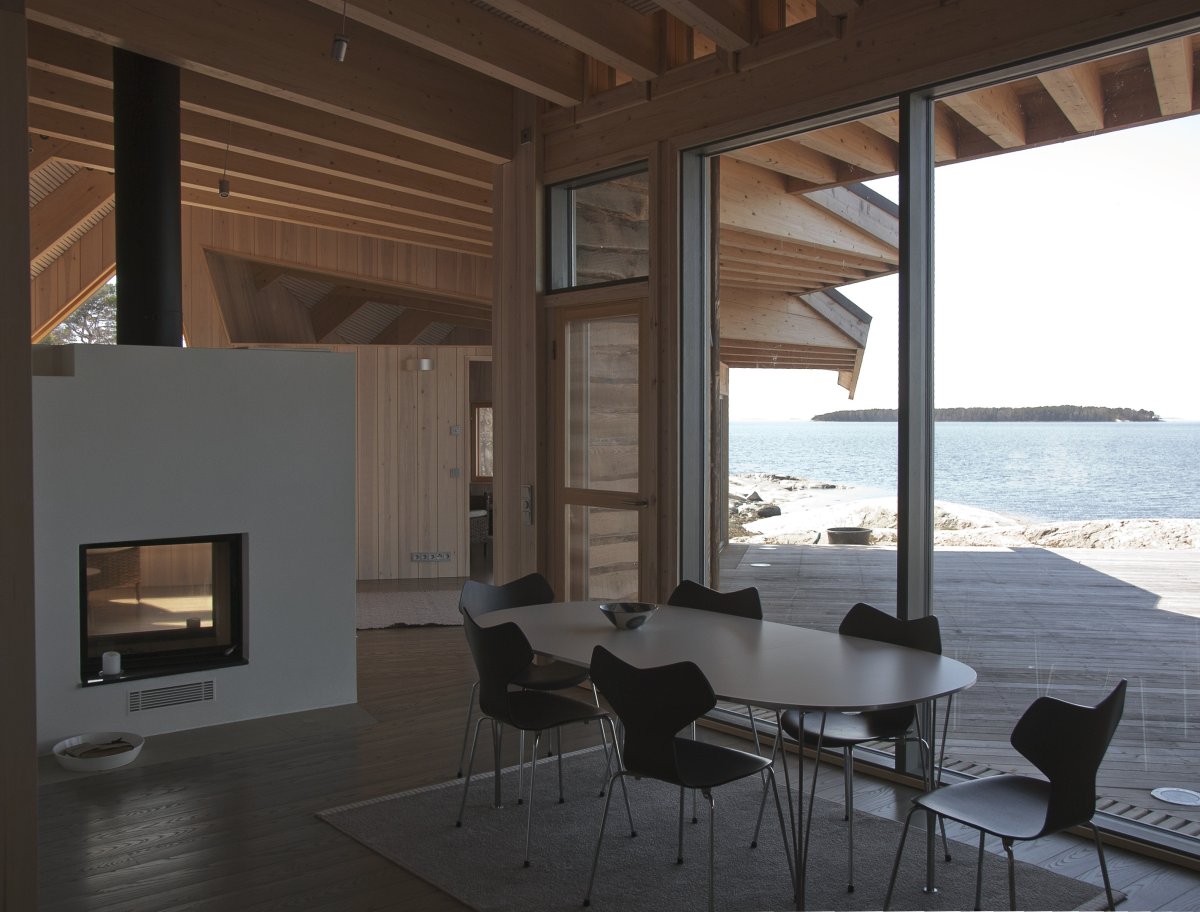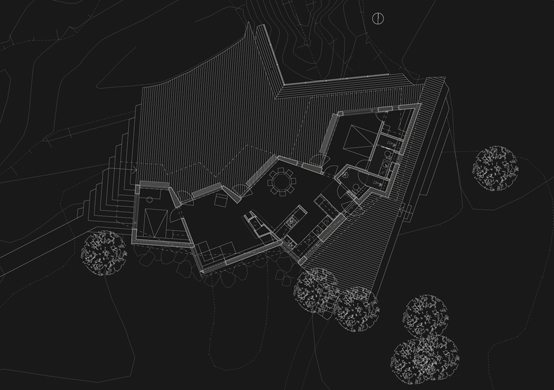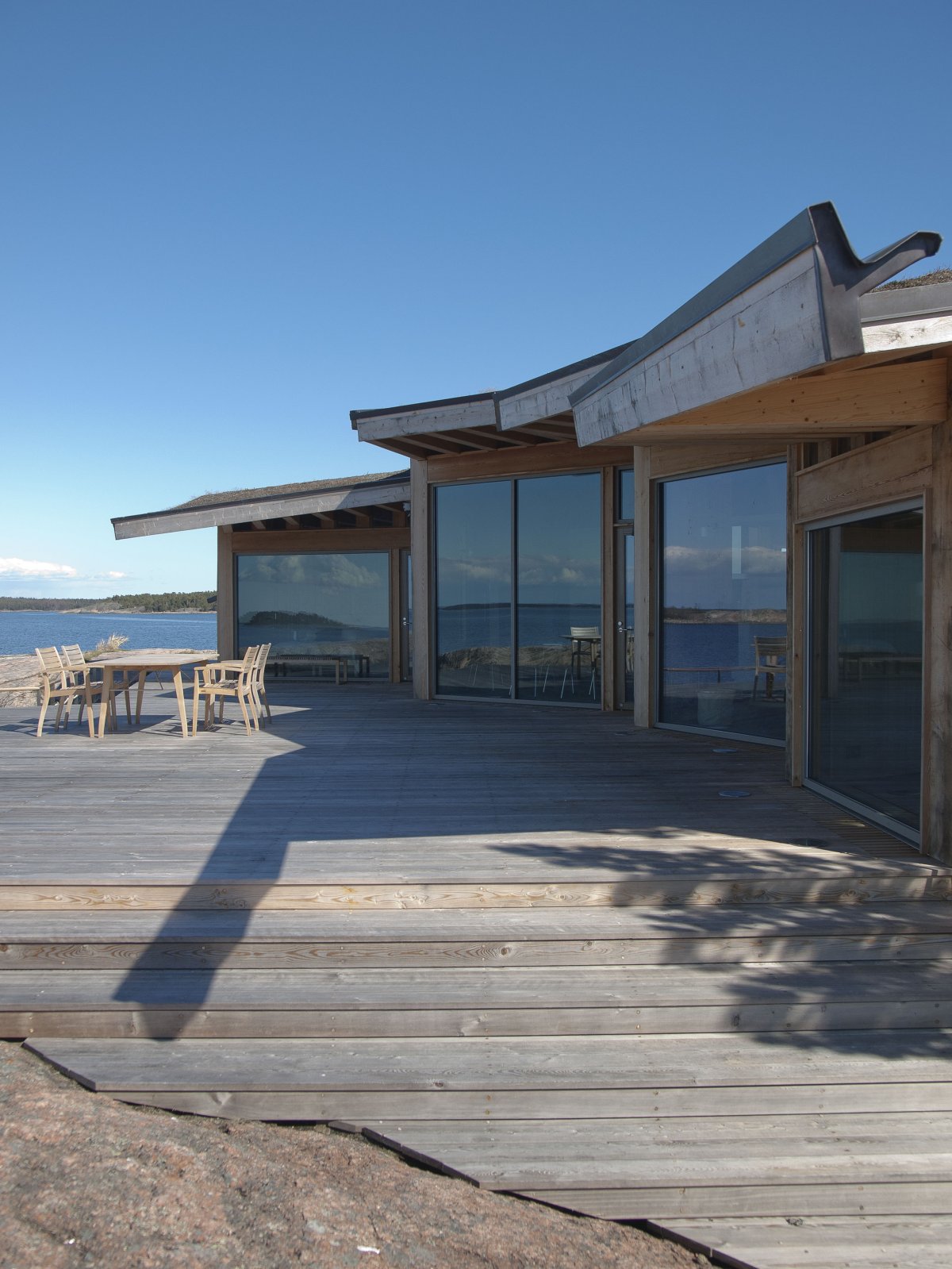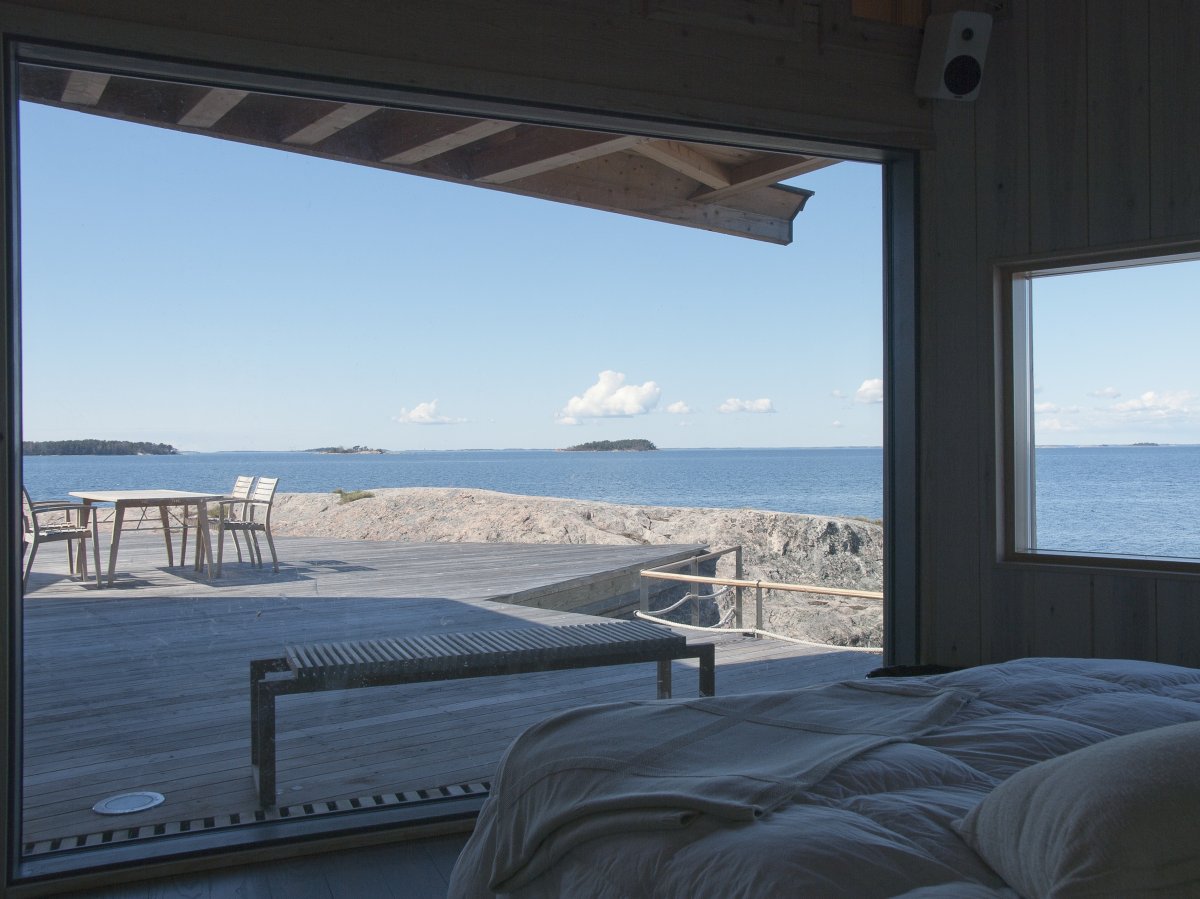A small remote island in the Gullkrona archipelago offers a panorama of changing seasons in the northern Baltic: late sunsets fill open skies and early sunrises dramatise rocky islands. In spring, constant birdsong greets the end of severe winter. Warm calm midsummer days are filled with scents of pine and juniper. Autumn storms drive huge waves over the rocks to freeze gradually, generating abstract formations of drifting ice. Finally, all is covered by snow. The villa is built to experience all this and counteract periods of urban hard work.
The geometry of the building relates to the forms of the bedrock with its varied colours and glaciated grooves. Larch, which naturally weathers silvery grey, clads the exterior, while sedum changes from green to brown on the roof during the summer. Exposed fans of laminated beams and columns form the structure. Inside, cladding is warm pine with paler ash flooring, making a welcoming cave in the wilderness.
The nature of its wood cladding – a rough or live-edged lap siding – covered by a jagged roof, makes the home seem like a vernacular cottage that has always been in that place; a natural part of its craggy surroundings.
John M. Cava: Precedents and Prototypes. Experiencing Today’s Nordic Housing. In the book edited by Marianne Ibler: A New Golden Age – Nordic Housing. Archipress M 2016.

